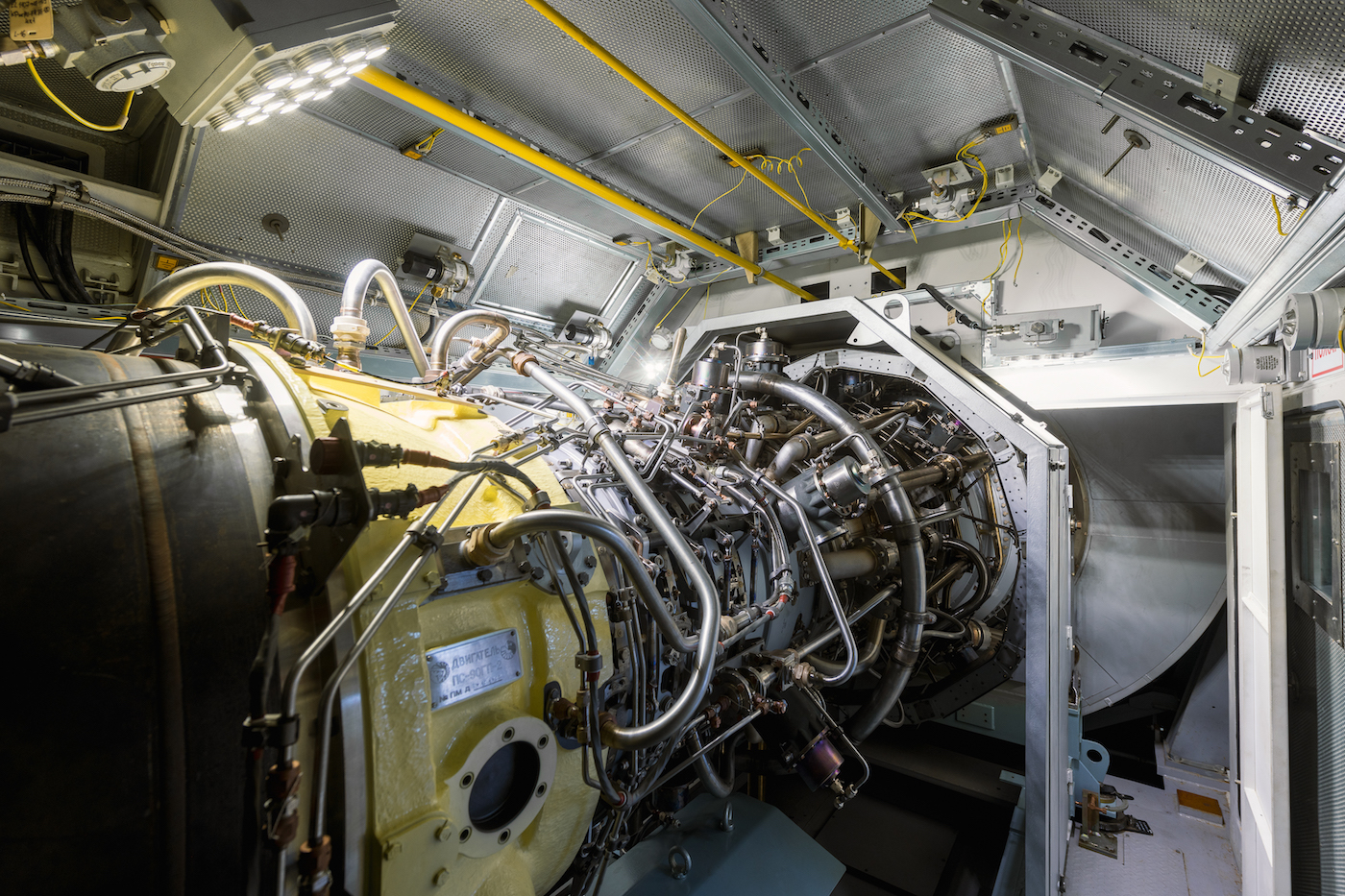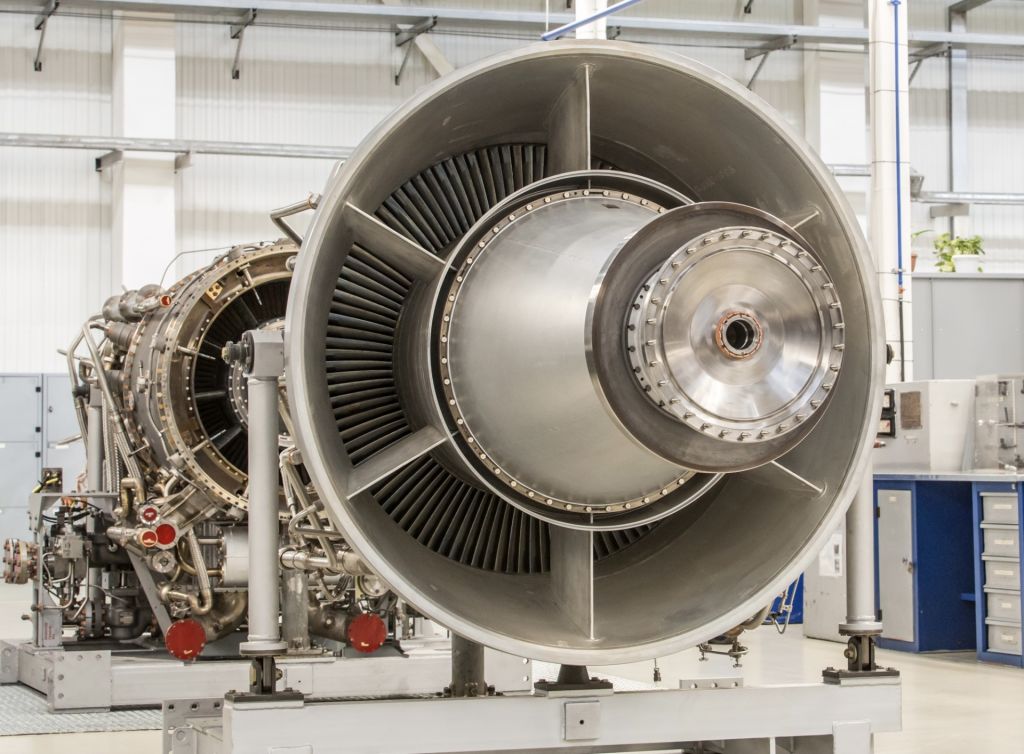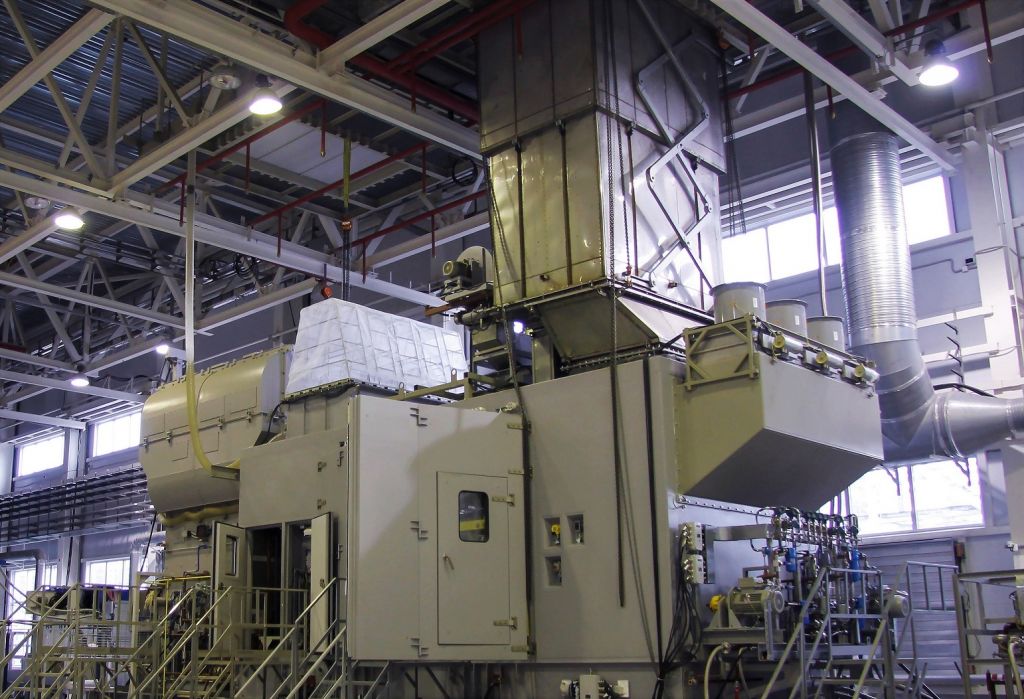
Photo: PJSC Gazprom
GTA-8 gas turbine unit for the first domestic power plant for arctic production platforms is at its final test stage. This 32MW plant will supply electricity and heat to production fields to ensure trouble-free oil or gas production in Arctic conditions. GTA-8 is based on a power plant designed using aviation technology. Rostec’s Rybinsk-based UEC-Gas Turbines is responsible for the power plant design and manufacture.
Below we’ll describe the way how aviation technology facilitates electric and thermal power generation even in the most extreme conditions.
Gas turbine engines: from sky to earth
There is nothing new about the history of sanctions pressure on Russia over the past years. It seems fair to say that our country was put under some or other sanctions most of the 20th century. And in the past century, like now, they had a kind of opposite effect driving the indigenous production. For example, when the USA imposed restrictions on gas turbine unit (GTU) supply for power industry and gas transport in the 1970s, Soviet engineers found a solution – to use aircraft gas turbine engines (GTE) that have reached the end of their service life.
In addition to the development of new GTEs, similar practice is still used today. And this is fully justified, because the unit, after its aviation “career”, can live another two or three lifespans on the ground. Used gas turbine power plants from both civil and military aircraft are suitable for the power generation purposes. Moreover, modern aircraft engines made in the 1980s and the 1990s allow to produce more powerful and environmentally friendly ground-based GTUs meeting all current requirements.

Photo: United Engine Corporation
Gas turbine engines based on aviation technology are used as electro-generator drives at power plants. Such plants are of particular importance where more common electricity supply method – via power grids – is not available. They may be helpful to provide power generation in a sufficiently prompt manner for a village, residential community or small town even in severe environment, e.g. in the Far North. The main requirement is that stable gas supply shall be available for the unit.
Large amount of high-temperature exhaust gases is one of the specific performance features of GTU. Engineers managed to make a virtue of this disadvantage: spare thermal energy in gas turbine combined heat and power plants is used for water and space heating which is particularly essential for northern regions.
Power plants for the country
Rostec’s United Engine Corporation is the major manufacturer of power generating gas turbine engines in our country. Several UEC companies develop and supply multipurpose power generators. The share of UEC gas turbine power generating units on the Russian market is currently about 30%, but this percentage will be reasonably growing after the exit of foreign companies.
UEC is now facing one of the most important challenges – to reduce the dependence on foreign equipment whose supply and maintenance are either hindered or totally impossible today. For this, a model range is being developed to ensure the widest possible coverage of Russian industrial demands. And the power plants made by UEC are already in service in dozens of Russian regions and produce electricity and heat in a sustained way in a wide variety of climatic conditions. Over the last 15 years, the Corporation has supplied more than 600 power units and gas compressor units with a total power of more than 6GW.
The first indigenous GTA-8 power unit for drilling rigs is one of the latest UEC’s developments in the power generation area. It is currently at the test stage and the first supplies to the customer – PJSC Gazprom – are scheduled for the beginning of 2023. GTA-8 unit was designed and manufactured at Rybinsk-based UEC-Gas Turbines.

GTA-8 Gas Turbine Unit. Photo: United Engine Corporation
The fist GTA-8 will be integrated into a 32MW power plant for the ice-resistant floating platform at the Kamennomysskoe-Sea field in the Arctic Kara Sea. The generator made in Rybinsk will supply electricity and heat to the field and provide power for the platform to ensure gas production.
At the initial stage, until wells are drilled and gas production is launched, the power plant consisting of four GTA-8 will run on diesel fuel. According to Dmitry Morozov, Chief Designer of UEC-Gas Turbines, the power plant will literally bring the platform to life. During the rest operation period, the power plant will run on the gas produced by the same plant with diesel fuel to be used in emergency. The key feature of new GTUs is their adaptation to severe Arctic conditions, for this purpose, materials and structure resistant to the north climate have been specially developed.

